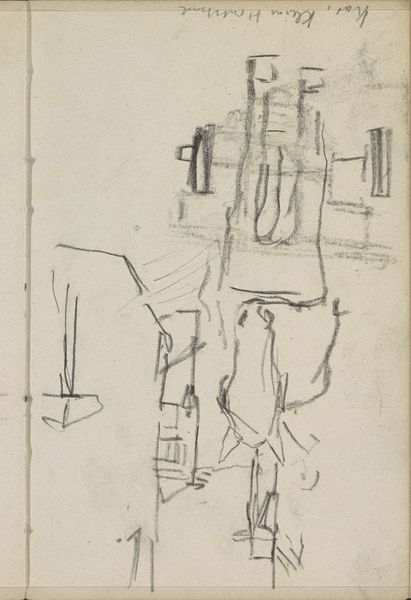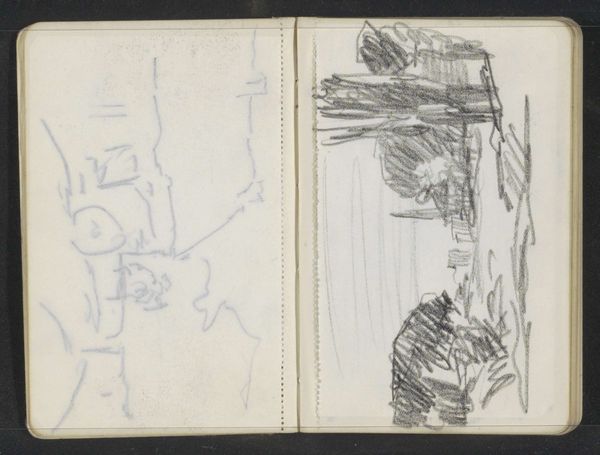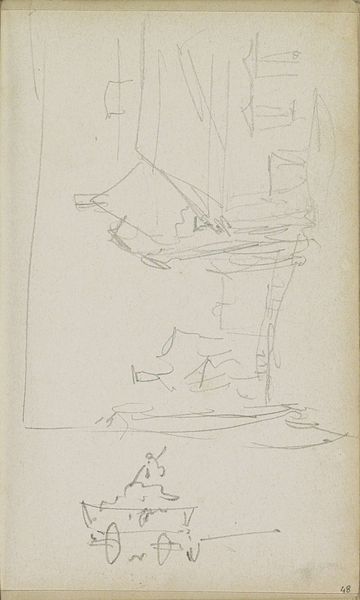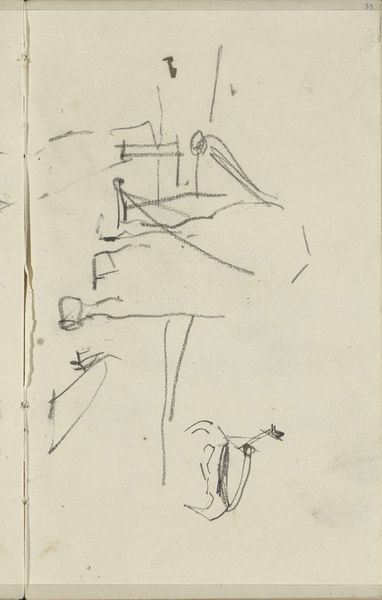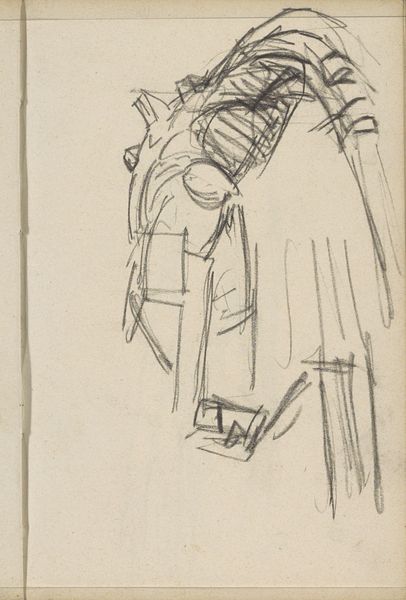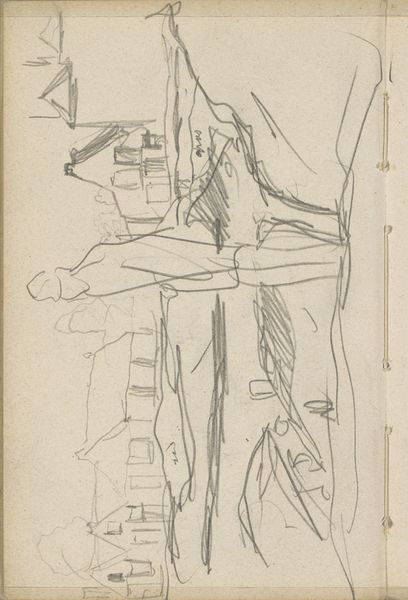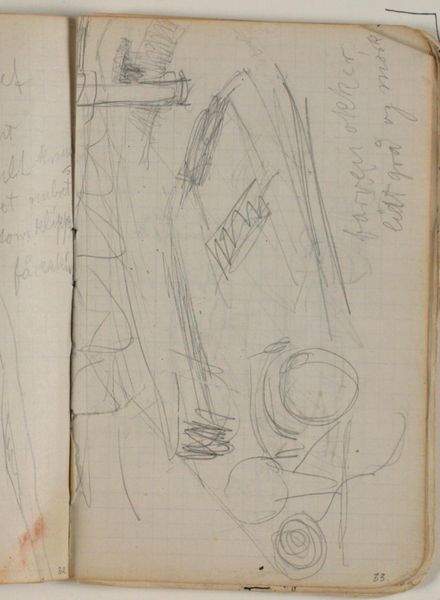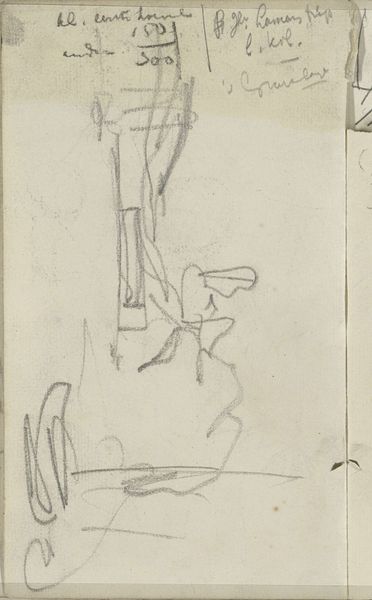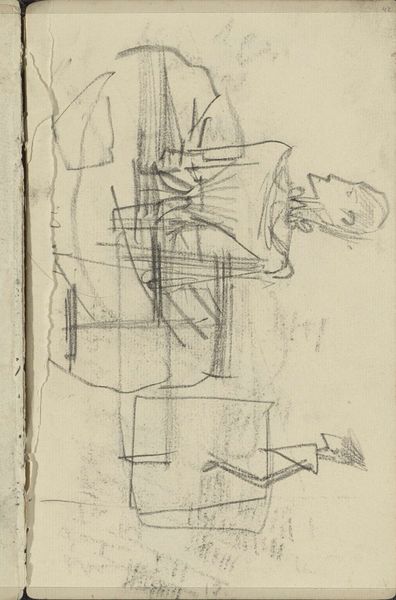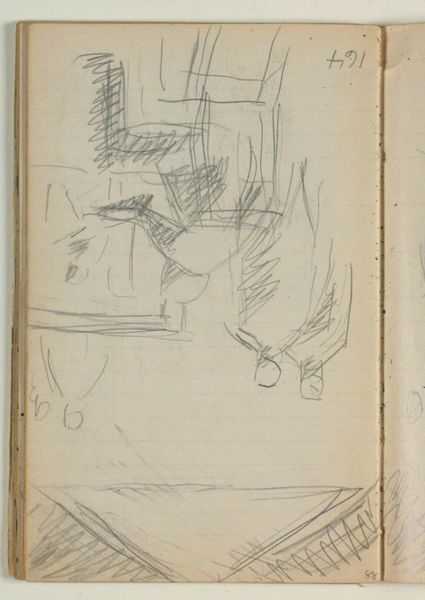
drawing, pencil, graphite
#
portrait
#
drawing
#
light pencil work
#
sketch book
#
figuration
#
personal sketchbook
#
idea generation sketch
#
sketchwork
#
pen-ink sketch
#
pencil
#
graphite
#
sketchbook drawing
#
storyboard and sketchbook work
#
sketchbook art
#
modernism
#
initial sketch
Copyright: Rijks Museum: Open Domain
Editor: This intriguing sketch, "Hoofd van een man en een figuur" which translates to "Head of a Man and a Figure", dates from somewhere between 1916 and 1945. Created by Reijer Stolk, it’s a pencil and graphite drawing. I’m struck by the rawness, like we’re glimpsing a fleeting idea. What do you see in this piece? Curator: Well, placing this drawing within its socio-historical context, we must consider the period in which it was made: a time of significant social and political upheaval, straddling two World Wars. These weren't studio-commissioned portraits. The raw and personal style reflects that instability. How do you think that social climate may have impacted the artist’s approach? Editor: It could be that Stolk wasn’t aiming for a polished, idealized representation, but a more honest and immediate capture of human emotion or experience under pressure. The lines are quick, almost nervous. Curator: Precisely! The choice of graphite and pencil—materials readily available and easily portable—further underscores this sense of immediacy and a practical engagement with the world around him. Consider how institutions at that time would be less interested in acquiring spontaneous drawings like this versus finished pieces. The drawing really only becomes valuable after the artist’s establishment in the artworld, right? Editor: Definitely! Now, that makes me think about sketchbooks today, which are celebrated as intimate spaces for artists, both professionally and personally. Curator: Indeed. The sketchbook in itself gained prominence through artistic movements, but also through an expanding art market. The shift mirrors a broader social shift valuing the artistic process, right? Does that change your initial reaction? Editor: It does. Seeing this work not as a study for a final product, but as an artwork of its own makes me appreciate its energy even more. I thought of it as a rough sketch before, but it has the possibility to be both preparatory *and* expressive! Curator: It's all those possibilities that make art and history interesting. It gives us different paths to see it!
Comments
No comments
Be the first to comment and join the conversation on the ultimate creative platform.

